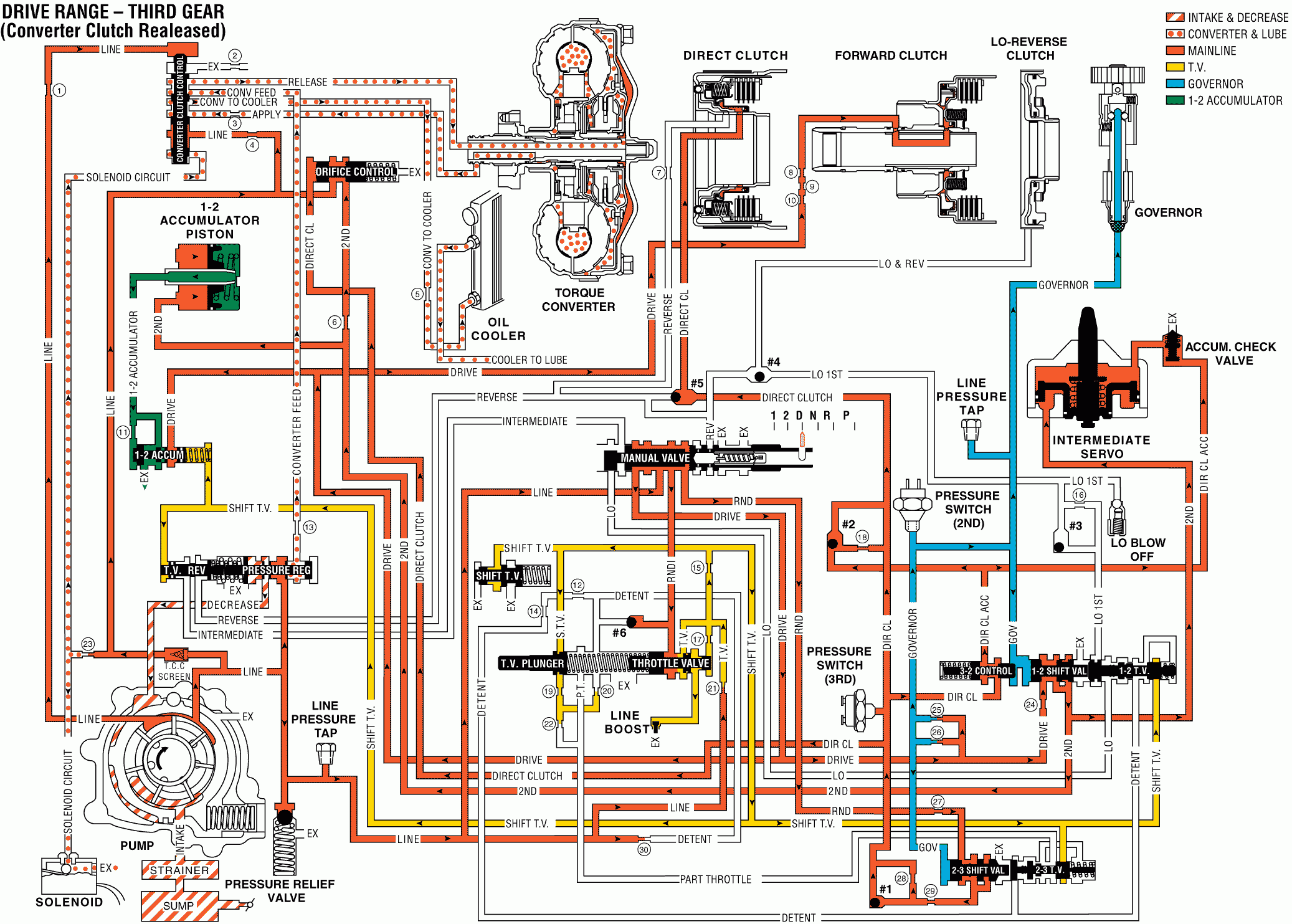As both the vehicle speed and the governor pressure increase,
the force of the governor oil acts on the 2-3 shift valve and overcomes the
force of the 2-3 TV spring and the shift TV oil. This allows the 2-3 shift
valve to open, and the RND oil enters the direct clutch oil passage. This
oil is called Direct clutch oil.
Direct clutch oil from the 2-3 shift valve is directed to the following
components:
| • | The direct clutch exhaust checkball |
| • | The direct clutch and reverse checkball |
| • | The direct clutch accumulator checkball |
| • | The accumulator check valve |
| • | The third clutch pressure switch |
Basic Control
Direct clutch oil from the 2-3 shift valve flows along the following
path:
| • | Past the direct clutch exhaust checkball |
| • | Past the third clutch pressure switch |
| • | To the direct clutch and reverse checkball, seating the checkball
in the reverse passage |
| • | To the inner area of the direct clutch piston, applying the direct
clutch |
At the same time, Direct clutch oil is directed along the following
path:
| • | Past the direct clutch accumulator checkball into the direct clutch
accumulator passage, where the oil is called Direct clutch accumulator oil |
| • | To the direct clutch accumulator check valve, seating the check
valve |
| • | To the release side of the intermediate servo |
The pressure of the direct clutch accumulator oil combines with the
servo cushion spring. Together this moves the servo piston against the Second
oil and acts as an accumulator for a smooth intermediate band release and
a direct clutch apply.
Direct clutch oil also flows through the 3-2 control valve to the direct
clutch accumulator passage.
Summary
The forward and direct clutches are applied and the intermediate band
is released; the transmission is in Drive (D) Range - Third Gear.
Drive Range, Third Gear - TCC Not Applied


